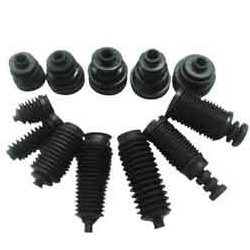In this process, a part of the configuration is cut into a series of metal plates that are stacked to form the mold. A plate is added where the injection nozzle introduces material into the sprue system and from there into the cavity. To form the rubber component, the heated mold plates are closed and the material is injected into the cavity through the nozzle of the injection. This can be screw system, ram system or combinations of both. The uncured rubber is then squeezed through the system whether hot or cold into the cavity which forms the rubber component. The injection system is set up in such a way to deliver amounts of material to the cavity, and the sprue system is set up so that no excess material is lost.

